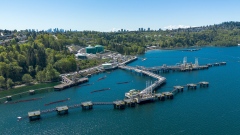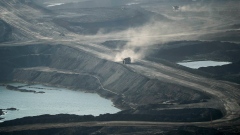Jun 28, 2024
Canada cuts bureaucracy, loans cash to bolster its space firms
, Bloomberg News
MDA Space awarded $1B contract to deliver Canadarm3
Four decades after the U.S. first began to encourage commercial space launch programs, Canada has finally gotten serious about promoting its homegrown space industries.
It launched the Commercial Integration Cell in May and the National Space Council in April after two years of planning. Both are intended to increase collaboration and communication between the government and the private sector, and were inspired by steps the U.S. had taken years earlier. Telesat Corp. Chief Executive Officer Dan Goldberg said in an interview that Canada’s cell is “long overdue.”
So far, just a few companies like MDA Space Ltd. and Telesat are participating in the integration cell due to the extensive clearance process, according to the Royal Canadian Air Force’s 7 Wing space operational command.
“The current governmental process, that is outside the Department of National Defence, is just very tedious,” 7 Wing Commander Colonel Catherine Marchetti said in an interview. “Frankly I think maybe it needs to be looked at.”
Although Canada isn’t currently competing at the same level as the U.S. or China in space, Chris Quilty of analytics firm Quilty Space sees the nation making advancements through cooperation.
“They can’t do their own lunar program on their budget, so they’ll kind of tag-along with the U.S.,” Quilty said. Instead, he said, Canada’s long-term objectives include being more active in the space between Earth and the moon.
The global space economy is expected to grow from US$630 billion in 2023 to US$1.8 trillion in 2035, according to a report by the World Economic Forum and McKinsey & Co. Canada ranked just 13th in the world on government space spending in 2022, according to Space Foundation research.
Yet Quilty noted that many countries with economies close in size to Canada’s don’t have as developed a space program. “Canada is one of those countries, along with Israel, that box above their weight class in all things space,” he said.
MDA CEO Mike Greenley said that the commercial cell is “an important evolution” for Canada’s space ambitions.
“Other countries have those as well,” he said, adding that it’s vital for government and industry to know “what we’re each doing with our assets in space.”
Telesat loan
Canada’s spending of US$730 million on its space program last year was dwarfed by other nations, including the U.S., China and Japan, according to a Novaspace report.
But the government agreed to what would be its biggest loan to a company this year, for a space venture. It plans to loan Telesat as much as $2.1 billion (US$1.5 billion) to build out its Lightspeed network of low-Earth orbit satellites built by MDA that will enable data processing, broadband and military uses.
The loan, which was equal to the amount Canada has spent on its space agency in the past five years, came at a time when a majority of Canadians say the government is spending too much. But Telesat defended the loan, saying that government backing is common in other parts of the world.
“We have big competitors in the U.S., like SpaceX for instance, that work really hand in glove with the U.S. government for funding,” Goldberg said. “Same with our European competitors, they’re working very closely with their governments.”
Quilty said that it was “a geopolitical decision” to support Canadian space firms and create hundreds of technology jobs.
Companies like MDA and Telesat are looking to low-Earth orbit because it offers better latency and affordability than traditional geostationary satellites and is a new market for satellite makers that were in the shrinking television market.
The growth of low-Earth satellite systems, like SpaceX’s Starlink, has helped boost MDA’s revenue growth above many of its larger peers, according to RBC Capital Markets analyst Ken Herbert, who added that this industry “is relatively new for the company.”
Government ambitions
Following China’s voyage to the far side of the moon this month, the Canadian Space Agency and NASA are planning an expedition to the moon’s south pole in 2026 to search for ice. If they find water, CSA says it could be used for electricity and help establish a permanent moon base.
In May, MDA, which developed the Canadarm robotic arm used on the International Space Station, joined Voyager Space Holding, Airbus SE and Mitsubishi to help build the Starlab space station, which is intended to become the commercial heir to the ISS after it is retired around 2030.
And MDA’s Canadarm3 will be part of NASA’s Gateway, a space station designed to orbit the moon. On Thursday, the company received an additional $1 billion Canadian government contract to complete its construction and testing.
CSA has also funded research into mining the moon and asteroid samples from the Osiris-Rex mission with NASA.
David Haight, a director at CSA, said exploring the moon is important because “Mars would be the next step.” And to venture further into the solar system, he said, “there’s definitely a lot of science and technology that we need to develop.”






